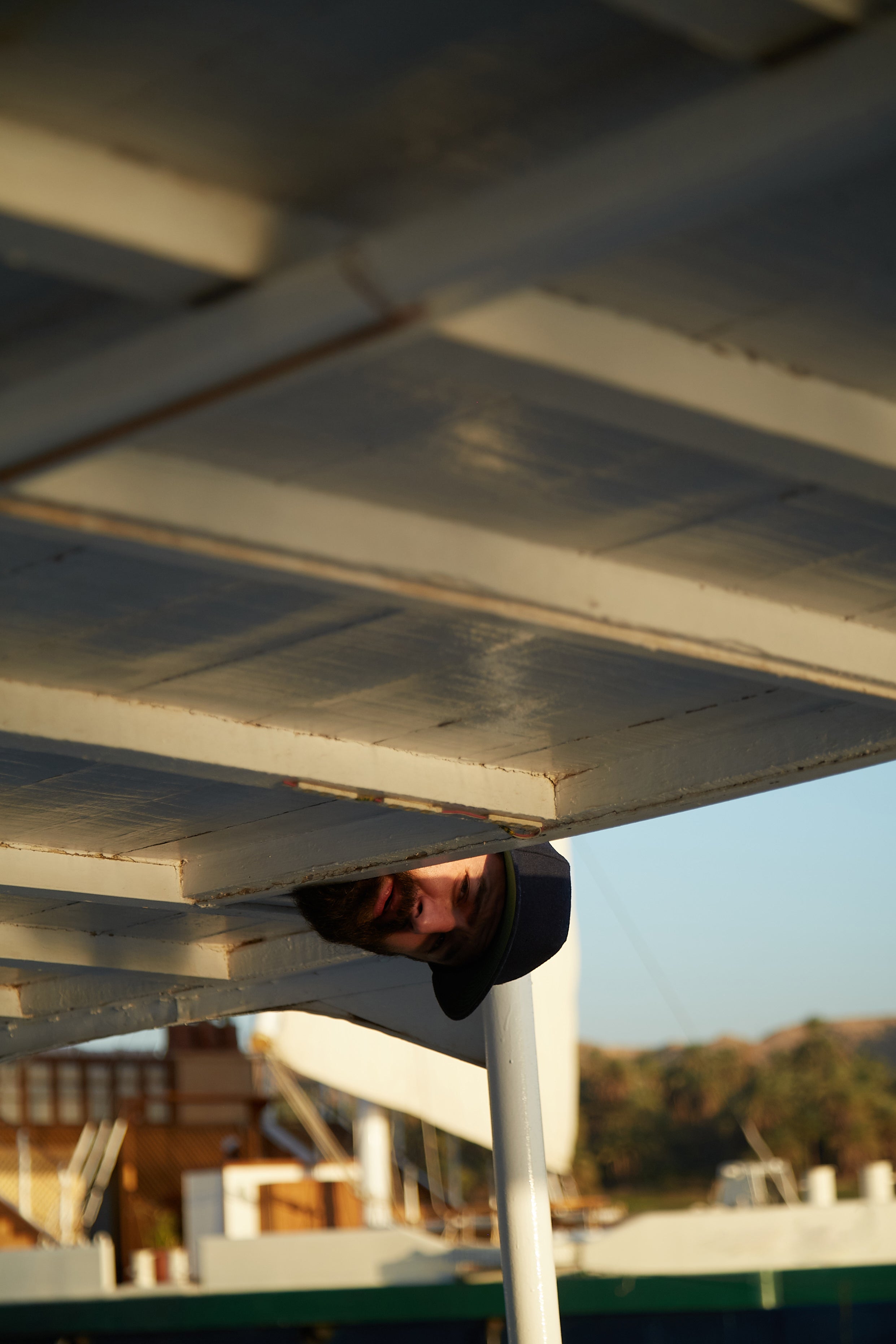
ATHAN MYTILINAIOS
Interview by Modernroad
Portrait by Billal Taright
“I remember as a kid, I didn’t like the staircase in our building, so I grabbed a blue pencil and started recoloring it, millimeter by millimeter. Eventually, I ran out of pencil, but the grown-ups liked it so much they kept it long after I moved out. I guess that was my first unsolicited commission. Objects, colors, shapes, surfaces; everything around us is designed by humans or by some greater force. ”

Can you tell us about your artistic beginnings? What first drew you to art and design? I remember as a kid, I didn’t like the staircase in our building, so I grabbed a blue pencil and started recoloring it, millimeter by millimeter. Eventually, I ran out of pencil, but the grown-ups liked it so much they kept it long after I moved out. I guess that was my first unsolicited commission. Objects, colors, shapes, surfaces; everything around us is designed by humans or by some greater force. When I started seeing the patterns hidden in what looked like chaos, it clicked for me. Since then, I’ve loved taking forgotten things and giving them new life. There’s something satisfying about making people smile with something that was overlooked before.
How has your cultural background influenced your creative vision? It’s definitely a mix – Greek roots, French culture, Italian way of thinking, and American sense of humor. I grew up crossing borders, both geographically and creatively. Moving between countries and languages exposed me to so many different perspectives. I think that’s why I create with a global audience in mind. I’m trying to tap into feelings that connect us all, something that resonates beyond the noise.
What was a pivotal moment in your career that shaped your artistic direction? I’ve always been on an artistic path, but early on, I made a conscious decision not to contribute to the visual noise until what I had to say came from a place of truth and intention. So I dedicated myself to learning from others and immersing myself in every angle of their creative process to execute their vision. The pivotal shift came when I realized it was time to shape and share my own. A true catalyst was meeting architect Tarek Shamma. He saw something in me, trusted it, and gave me the space to contribute on some of his projects. That collaboration became the first time I felt my personal artistic voice fully integrated into a larger project, and it’s been evolving ever since.

As both an artist and creative director, how do you balance these two roles? They’re constantly bleeding into each other. My art is approached with the eye of a creative director, and my creative direction is infused with artistic instinct. It is balancing the what with the how; you always need both. Once I sketch an idea, I look at it as a director: How do I communicate this feeling clearly? What colors, light, texture, or composition will do it justice? With clients, I always think in terms of emotion first. I never pitch the safe option. I help them make the boldest leap they’re ready for and guide them through it visually. Drawing helps. If you can draw it, they can believe in it.
How has your approach to creativity evolved over the years? It’s in constant flux. But lately, I’ve been moving away from the hyper-polished aesthetic of AI and leaning into raw, imperfect humanity. My work usually starts with something very precise, almost obsessive. But through repetition, tracing, carving, embossing, painting, the extra information fades away, and what’s left is something truer, rougher, and more alive.
SHOP VOLUME 7 - TO READ MORE
